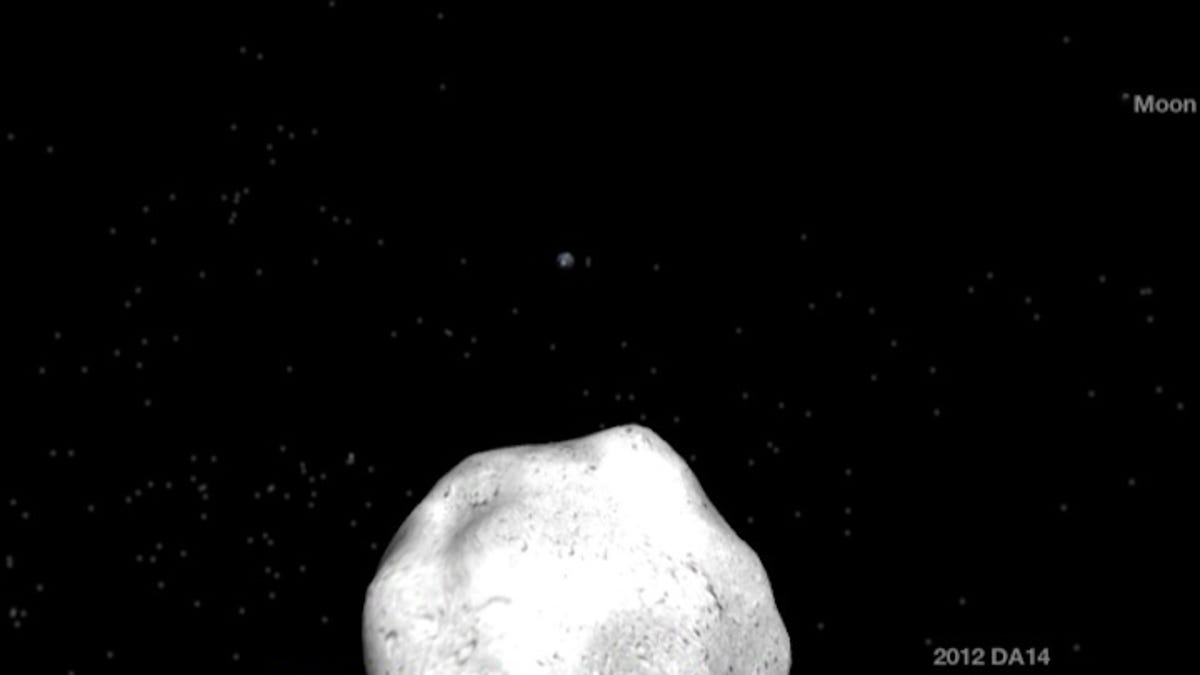Odds of dying from an asteroid strike: 1 in 74,817,414
Scientists estimate there are around 500,000 near-Earth asteroids the size of 2012 DA14, and less than 1 percent have been discovered.

It was a busy day for planet Earth. Asteroid 2012 DA14, a 45-meter wide space rock, sped past the Earth a mere 17,100 miles overhead. In the Ural mountains of Russia, a 15-meter wide, 7,000 metric ton asteroid hit the Earth's atmosphere, creating a 300-kiloton shock wave that injured more than 1,000 people and shattered 1 million square feet of glass.
What are the odds that an asteroid impact will destroy your being in a given year? Slim -- 1 in 74,817,414, according to data compiled by The Economist. For comparison, the odds of dying from a bee or wasp sting are 1 in 25,364,571; by lightning, 1 in 10,495,684; from falling down stairs, 1 in 157,300; by firearm assault, 1 in 24,974.
NASA officials said the Ural mountains asteroid was a rare, unpredictable event, occuring every 100 years, and totally unrelated to the passing of 2012 DA14.
Just over 100 years ago, in Tuguska, Siberia in 1908, an asteroid somewhat smaller than 2012 DA14 decimated about 750 square miles of forest near what is now Krasnoyarsk Krai, Russia.
According to a National Research Council committee report, "Defending Planet Earth: Near-Earth Object Surveys and Hazard Mitigation Strategies," space objects somewhat larger than 2012 DA14, at least 140 meters in diameter, cause damage on Earth on average every 30,000 years.
The Near-Earth Object Program Office of NASA's Science Mission Directorate is tracking the AG5, 140-meter wide asteroid that has the potential to impact Earth in 2040. NASA puts the odds at 1 in 625 of it hitting the Earth.
About 65 million years ago an asteroid or comet of 10 kilometers in size wiped out dinosaurs and other planet life on the Yucatan peninsula. Such a cataclysmic event occurs once every 100 million years on average, according to a National Research Council committee report.
Scientists estimate there are around 500,000 near-Earth asteroids the size of 2012 DA14, and less than 1 percent have been discovered. The U.S. House Committee on Science, Space, and Technology plans to hold a hearing soon "to examine ways to better identify and address asteroids that pose a potential threat to Earth."
With enough time and technology, a spacecraft could be sent to divert a smaller asteroid or meteor from an earthly collision, or a nuclear explosion might be used to diminish the impact of a larger space object, according to the National Research Council report. But as the space rock that vaporized above the Ural mountains indicates, there won't always be time for evasive actions.

